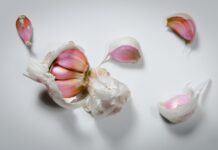Last Updated on April 11, 2020
2. The Risks and Side Effects of a Nose Flush
Sinus anatomy is a complicated one. This means that once you get allergic sinusitis, for example, a whole complex system at the front of your skull gets effects. The inside of this system can be delicate in certain parts, making it susceptible to infection.
It is for this reason that sinus infection treatment is very sought after. Therefore, if you want to do a sinus flush, you need to make sure that you use sterile water and not just any water that you have available. Failing to do so can put you at the risk of getting infected by a dangerous parasite called Naegleria fowleri.
Such an infection can lead to very dangerous complications. For example, you can find yourself suffering from a severe headache or a fever. Other more dangerous complications include a stiff neck, changed mental state, seizure, and even coma. Be careful.
Other mild side effects involve a stinging in the nose, nosebleeds, and sneezing. We urge you, then, to use only sterile water if you want to seek this treatment.
3. This Is How to Do a Sinus Rinse
Now it is time to tell you about the exact procedure you need to follow if you are suffering from sinus congestion. This is a very simple process; however, you need to make sure that you do not make any mistakes while executing the steps.
It is important, therefore, that you read the steps more than once, understand them fully, then go ahead with applying them.
As you have seen earlier, a sinus rinse recipe is a very simple one—just water and salt—make sure, therefore, that you prepare it using sterile water and apply the following steps:
a. At first, you need to stand over the sink with your head tilted to one side. Incidentally, you can do this in the shower as well, if you want more wiggle room.
b. For this process to work, you need to use a squeeze bottle, which will push the solution into your nasal cavities allowing it to reach all areas. However, make sure that you do it slowly at first.
c. Next, you need to let the solution come out of your other nostril. During this process, more importantly, you need to make sure that you breathe through your mouth and not through your nose.
d. The next step involves repeating all of the above with your other nostril, so make sure that you do that.
e. It is important that you do not allow the water to reach the back of your throat. If you find that this is the case, make sure that you keep adjusting your head until the water starts coming out for the opposite nostril.
f. After you’re done with both nostrils, it is important that you blow your nose—please do it gently—into a tissue to get rid of any leftover mucus. Then, Gently blow your nose into the tissue when you’re done to clear out any mucus.


















